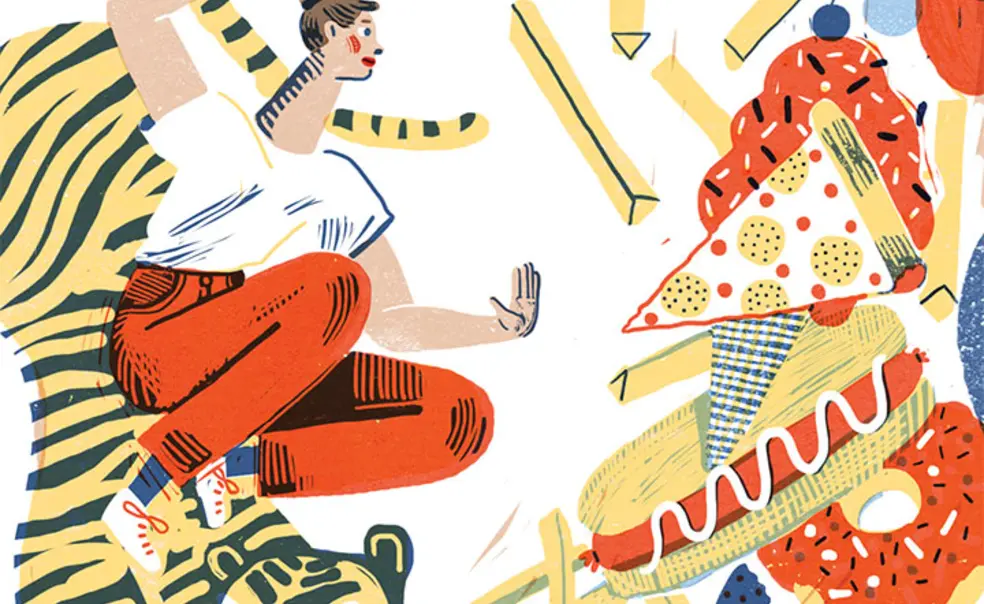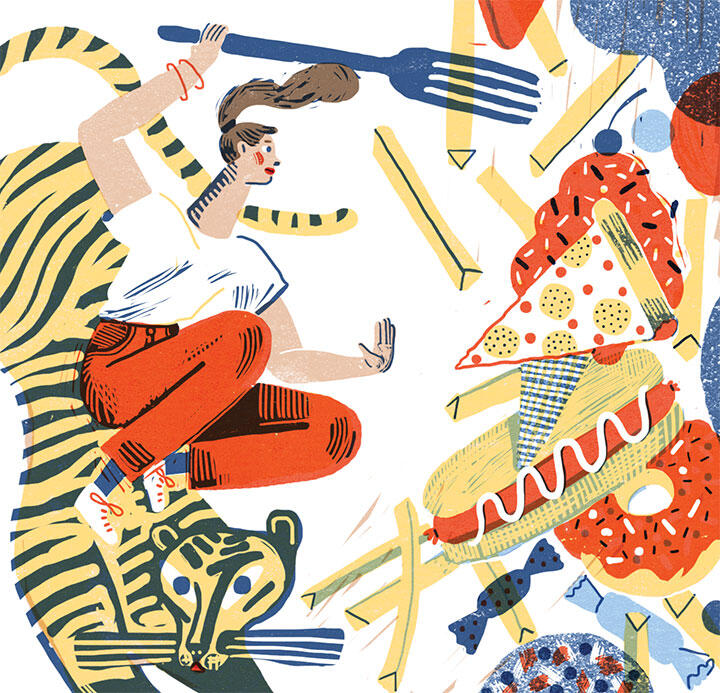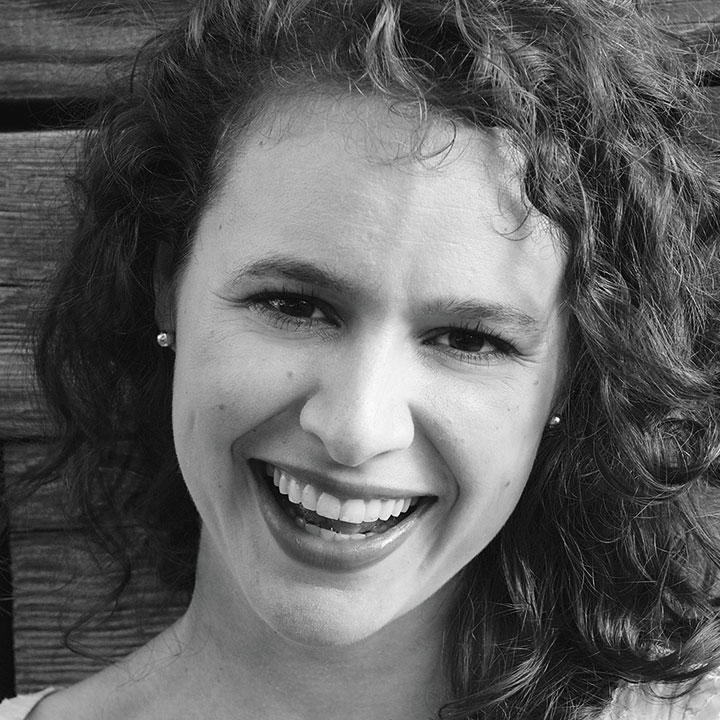Essay: Princeton, Food, and Me
Katie Seaver ’10 coaches people who struggle with their eating and weight, and writes at katieseaver.com.
Here’s a memory from Princeton: waking up at 8, pulling my scale out from under my bed, and weighing myself. And feeling my heart sink.
Here’s another: sitting on the floor in my tiny bedroom in Henry, my finger covered in Nutella eaten directly out of the jar, and kicking myself because I’d ruined my eating. Again.
Before coming to Princeton, my approach to food mirrored the way I approached my schoolwork: My willpower can and will get me where I want to go. I did hours of homework for AP Chemistry, AP European History, and AP French, taking a short break for a dinner of grilled chicken and raw vegetables. My discipline paid off: I got into Princeton, and I was thin. Once I got to campus, though, something started to break down. I’d come across leftover food from a study break in the Rocky common room and eat three brownies without thinking.
When I started gaining weight, I drew from my Type A toolkit and began keeping a food log to catalog what I was eating and the calories. If I ate too much, I vowed to have only chicken and vegetables until I had undone the damage. But when a friend’s parents took me out to dinner, I ate in a “responsible” way, then ran to the dining hall to stuff myself with two pieces of pizza. I was weighing myself in the afternoon, at night, and again in the morning.
I saw fliers from McCosh about eating disorders, but never sought a clinical diagnosis or saw a therapist. I knew that I obsessed too much, but I didn’t know that I could ever stop feeling that way. But in the spring of my senior year, I stumbled on a book called Breaking Free From Emotional Eating by Geneen Roth. Roth talks about learning to eat when we are hungry and to trust our cravings. Her writing hit me hard. I had tracked, monitored, controlled, and obsessed in a million ways, but I had never thought of just trusting myself.
Warily, I bought a chocolate-chunk cookie from the Bent Spoon. I ate it slowly, noting how hungry I felt before and during, and paying close attention to the flavor. After a few bites, I realized something shocking: I didn’t want any more sugar, and I wasn’t actually hungry.
I started recording whether I was hungry when I started eating, how full I was when I stopped, and whether I enjoyed the food I chose. It turned out that I was rarely eating when I was hungry, and that I often ate past fullness. And I used food to console myself. When I needed a break from my thesis, I ate. When I was worn out from socializing at my eating club, I ate. When I felt not charming or funny enough with a group of friends, I ate.
I was never formally diagnosed, but I came to understand that I was emotionally and compulsively eating. Now that I speak openly about my ordeal, I am saddened by the number of women who confide similar experiences. Researchers at the University of Michigan found that 26 percent of undergraduate women reported worrying that they had “lost control over how much they eat,” and more than 13 percent presented symptoms of eating disorders. Yet of those with symptoms, fewer than 10 percent ever received a diagnosis.
Several years after graduation, I learned to more consistently differentiate between when I was hungry and when I was experiencing moods and anxieties that need to be dealt with. I gained a stronger sense of self. I learned that it’s OK for people not to like me or think I am impressive. I finally feel free and joyful around food.
I am immensely thankful to Princeton for what it taught me about the world, but it didn’t teach me how to be myself in that world. I had to learn that on my own.














No responses yet